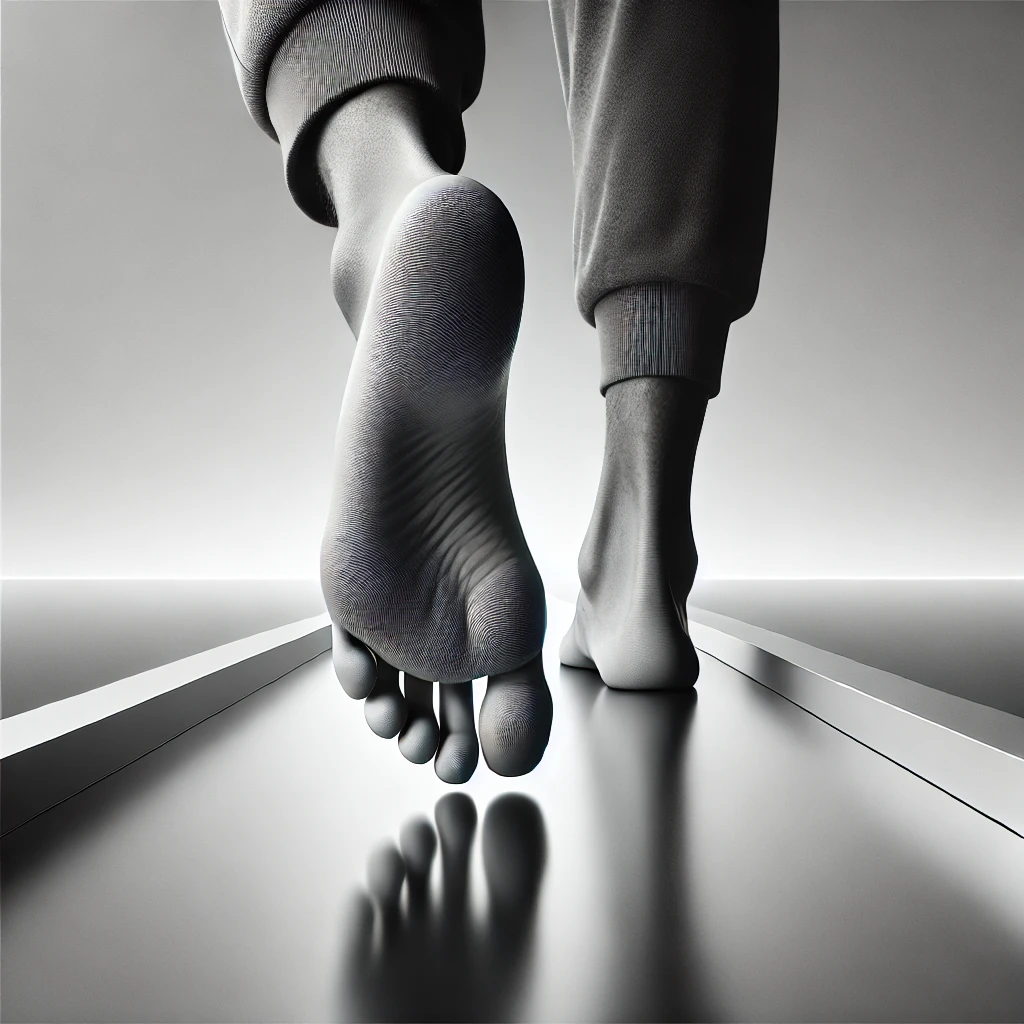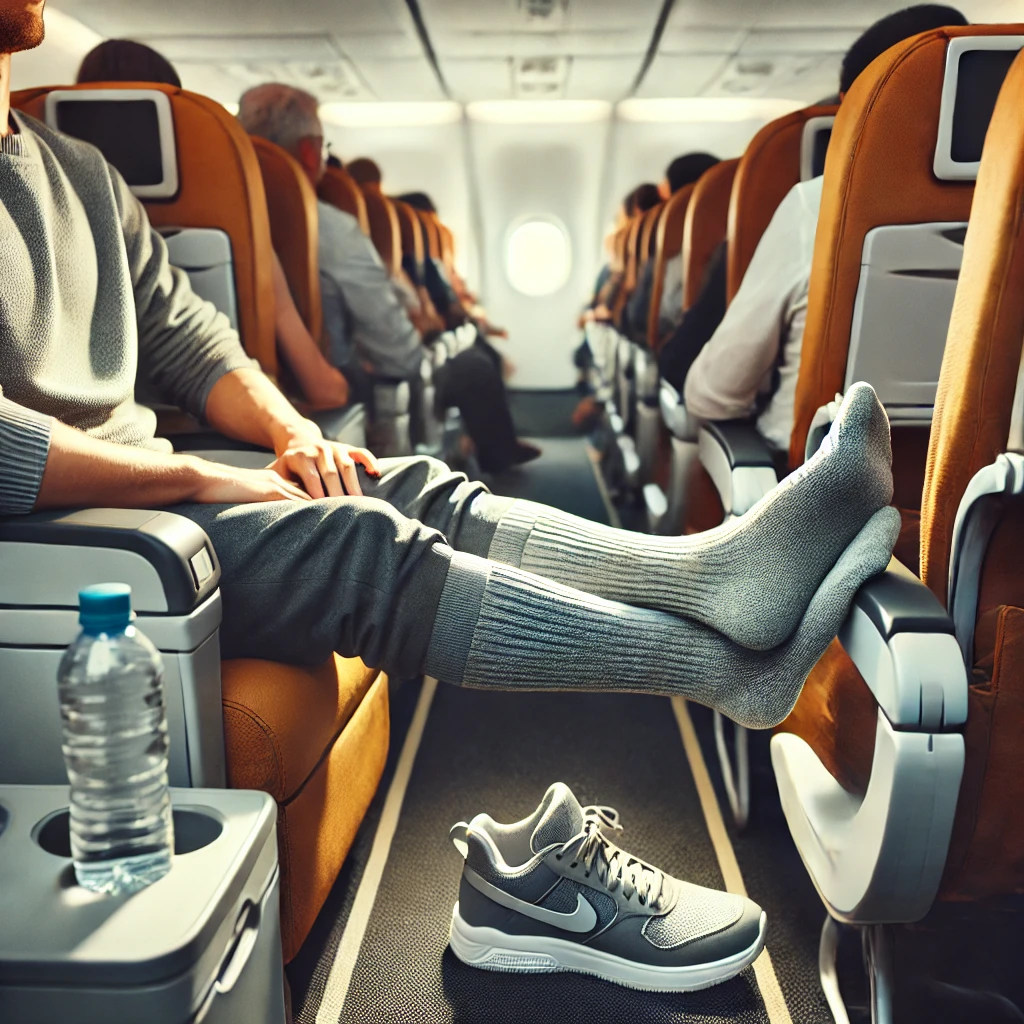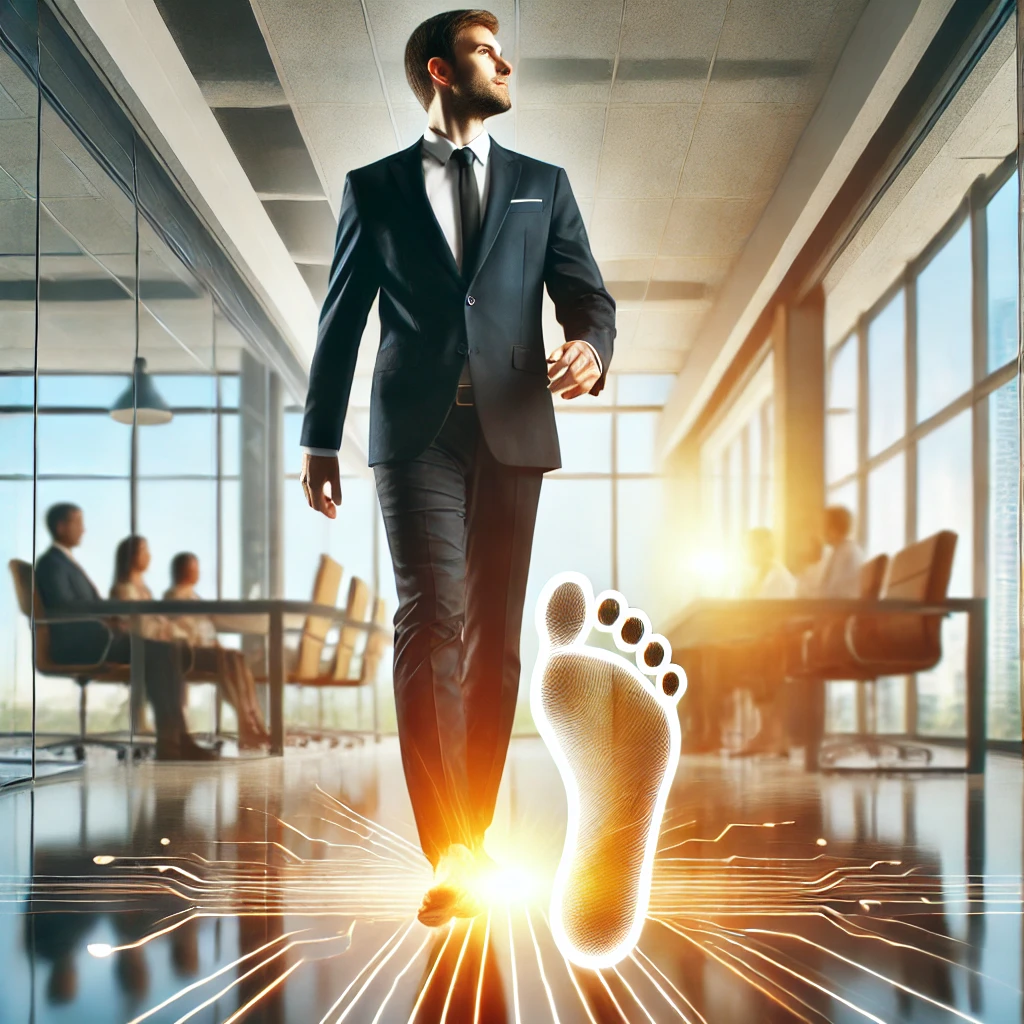Introduction
Most people don’t think about their feet until they start hurting. Yet, foot health plays a crucial role in overall well-being, affecting everything from posture to mobility. One major factor that often goes unnoticed is the impact of the surfaces we walk on daily.
Modern flooring—whether it’s concrete, tiles, or hardwood—is vastly different from the natural terrains our ancestors walked on. The shift from uneven, soft earth to flat, hard surfaces has significantly influenced foot mechanics, often leading to pain and long-term health issues.
In this article, we’ll explore how flat surfaces affect foot health, the common problems they cause, and ways to mitigate these issues to maintain strong, healthy feet.
Understanding Foot Anatomy

The human foot is a complex structure, designed to handle various movements, absorb shocks, and maintain balance. It consists of:
- 26 bones – making up nearly a quarter of the bones in the human body.
- 33 joints – allowing flexibility and movement.
- Over 100 muscles, tendons, and ligaments – providing strength and support.
The Natural Arch and Biomechanics
One of the key elements of foot structure is the arch, which plays a critical role in weight distribution and shock absorption. The three main arches are:
- Medial longitudinal arch – runs along the inside of the foot.
- Lateral longitudinal arch – runs along the outer foot.
- Transverse arch – stretches across the foot’s width.
These arches work together to adapt to various terrains, providing the flexibility and support needed for movement. However, when we consistently walk on flat, hard surfaces, our feet don’t get the same level of natural exercise, leading to potential issues.
Evolution of Human Movement and Surfaces
Humans evolved walking barefoot on natural, uneven surfaces like grass, dirt, sand, and rocks. These terrains provided a mix of soft and firm textures, which kept feet strong and flexible.
The Shift from Natural Ground to Artificial Flooring
In today’s world, we mostly walk on:
- Concrete sidewalks
- Asphalt roads
- Hardwood or tiled floors
- Office and home carpets with little to no cushion
These surfaces are flat and unyielding, limiting natural foot movement. Over time, this leads to weaker foot muscles, decreased flexibility, and increased strain on the joints.
How This Transition Affects Foot Health
- Reduces natural foot stimulation and muscle activation
- Limits the variation in movement, leading to stiffness
- Increases pressure on the arches, causing foot fatigue
How Flat Surfaces Affect Foot Mechanics
When you walk on a natural, uneven surface, your foot constantly adjusts to the terrain, engaging different muscles and ligaments. However, walking on flat surfaces reduces this variability, leading to:
1. Lack of Variation in Movement
Flat surfaces do not challenge foot mechanics the way natural terrains do. This can lead to muscle atrophy and joint stiffness over time.
2. Increased Strain on the Arches
The foot arch relies on movement for strength. Walking on flat, hard surfaces forces the arch to remain in a fixed position for extended periods, leading to weakness and collapse.
3. Effects on Muscles, Tendons, and Joints
The lack of adaptability on flat surfaces can cause stress on the:
- Plantar fascia – leading to plantar fasciitis
- Achilles tendon – increasing the risk of tendonitis
- Knees and hips – causing misalignment and pain
Common Foot Problems Caused by Flat Surfaces

Spending too much time on flat surfaces can lead to various foot conditions, including:
1. Flat Feet and Fallen Arches
- Occurs when the arch collapses due to lack of support.
- Leads to overpronation (excessive inward foot rolling).
- Can cause pain in the feet, knees, and lower back.
2. Plantar Fasciitis
- Inflammation of the plantar fascia ligament.
- Common in people who stand for long hours on hard surfaces.
- Causes heel pain, especially in the morning.
3. Achilles Tendonitis
- Overuse injury affecting the Achilles tendon.
- Results from repetitive strain on flat, hard surfaces.
- Leads to stiffness and pain, especially during movement.
4. Knee, Hip, and Back Pain
- Misalignment in foot posture affects the entire body.
- Flat surfaces can contribute to joint and spinal stress.
- Long-term exposure increases the risk of arthritis.
The Connection Between Footwear and Flat Surfaces
The surfaces we walk on are only part of the equation—our choice of footwear also plays a crucial role in foot health. Shoes can either support or exacerbate the negative effects of flat surfaces.
The Role of Shoes in Foot Health
Modern footwear, especially shoes with thick soles and high heels, alters the natural biomechanics of the foot. Instead of allowing the foot to move freely and engage its muscles, shoes often provide excessive cushioning that reduces foot strength over time.
Supportive vs. Non-Supportive Footwear
- Supportive Shoes:
- Contain arch support, cushioning, and a firm sole.
- Help distribute weight evenly.
- Reduce strain on the plantar fascia and Achilles tendon.
- Non-Supportive Shoes:
- Lack adequate arch support.
- Can cause the foot to overpronate or supinate.
- Increase the risk of foot pain and injury.
Barefoot Walking vs. Shoe Dependency
Walking barefoot, especially on natural terrains, strengthens foot muscles and promotes better posture. However, transitioning to barefoot movement should be gradual to avoid injuries. Many experts recommend minimalist shoes that mimic the feeling of walking barefoot while still offering some protection.
The Importance of Arch Support

Arch support is vital for maintaining foot alignment and reducing strain on the muscles and ligaments. Without proper support, people are more likely to experience conditions like plantar fasciitis, flat feet, and joint pain.
How Arch Support Helps Foot Alignment
- Provides stability to the foot
- Distributes weight evenly
- Reduces pressure on the arches
- Minimizes the risk of foot fatigue and pain
The Role of Insoles and Orthotics
For individuals who experience foot pain, using custom orthotics or supportive insoles can be beneficial. These devices:
- Correct abnormal foot positioning
- Provide cushioning and shock absorption
- Help alleviate pain from existing foot conditions
Who Needs Additional Arch Support?
- Individuals with flat feet
- People who stand for long periods on hard surfaces
- Athletes and runners
- Those experiencing chronic foot pain
Impact on Posture and Overall Body Alignment
Flat surfaces do not just affect the feet—they can also influence posture and body alignment. Poor foot mechanics caused by hard, flat surfaces can lead to misalignment issues that affect the knees, hips, and lower back.
How Foot Misalignment Affects the Entire Body
When the foot lacks proper support, it can cause:
- Overpronation (foot rolling inward)
- Supination (foot rolling outward)
- Increased pressure on the knees and hips
- Altered spinal alignment
The Relationship Between Foot Health and Back Pain
Many people who suffer from chronic lower back pain may not realize that their foot posture is the root cause. If the arches collapse or the feet are not properly supported, the body compensates by adjusting its posture, leading to discomfort and pain in the back.
Long-Term Consequences of Poor Foot Posture
- Chronic joint pain
- Increased risk of arthritis
- Limited mobility and flexibility
- Greater susceptibility to injuries
Effects on Athletes and Active Individuals
Athletes and individuals with active lifestyles are particularly vulnerable to the effects of flat surfaces. High-impact activities such as running, jumping, and weightlifting place added stress on the feet and joints.
Increased Risk of Injuries
- Stress fractures: Due to repetitive impact on hard surfaces.
- Shin splints: Common among runners and those who exercise on concrete or asphalt.
- Ankle sprains: Caused by improper foot alignment and lack of support.
Performance Limitations Due to Poor Foot Mechanics
Athletes rely on proper foot biomechanics for optimal performance. Misalignment or poor arch support can lead to:
- Reduced speed and agility
- Decreased endurance
- Increased fatigue and soreness
Best Practices for Athletes
- Wear proper footwear designed for their specific sport.
- Train on softer surfaces like grass or turf when possible.
- Incorporate foot-strengthening exercises into their routine.
The Role of Barefoot Walking and Natural Movement

Many experts suggest that walking barefoot on natural surfaces can help counteract the negative effects of flat flooring. This practice strengthens the foot’s intrinsic muscles and improves flexibility.
Benefits of Walking on Natural Surfaces
- Encourages better foot mechanics
- Strengthens foot and ankle muscles
- Reduces pressure on joints
- Promotes better balance and coordination
Strengthening Foot Muscles Naturally
Walking on surfaces like grass, sand, or dirt forces the foot to adapt and engage stabilizing muscles, leading to stronger feet.
How to Safely Transition to Barefoot Movement
- Start with short sessions to allow the feet to adjust.
- Walk on soft, natural surfaces before transitioning to harder ones.
- Perform toe and arch strengthening exercises to build foot resilience.
How to Prevent Foot Problems from Flat Surfaces
Preventing foot problems requires a combination of lifestyle adjustments, proper footwear, and targeted exercises.
Home Remedies and Lifestyle Adjustments
- Avoid standing for long hours on hard floors.
- Use anti-fatigue mats in areas where prolonged standing is required.
- Elevate feet and stretch regularly to reduce strain.
Exercises to Strengthen Foot Muscles
- Toe curls – Picking up small objects with toes.
- Heel raises – Strengthens calf muscles and foot arches.
- Ankle rotations – Improves flexibility and prevents stiffness.
Choosing the Right Flooring and Shoes
- Opt for carpeted or cushioned flooring at home.
- Select shoes with good arch support and cushioning.
- Rotate between different shoe types to avoid repetitive strain.
Exercises for Foot Strength and Flexibility
Keeping the feet strong and flexible can help prevent pain and injury.
Stretching Techniques
- Plantar fascia stretch: Gently pull toes back to stretch the bottom of the foot.
- Calf stretches: Helps relieve pressure on the Achilles tendon.
Strength-Building Exercises
- Arch lifts: Strengthens the foot’s natural arch.
- Foot rolling: Use a tennis ball to massage and relieve tension.
Massage and Recovery Tips
- Soak feet in warm water to reduce stiffness.
- Use a foam roller or massage ball to relieve tightness.
- Ice sore areas to reduce inflammation.
Alternative Flooring Solutions for Better Foot Health
Modifying flooring can improve foot comfort and overall health.
Carpet vs. Hardwood vs. Tiled Floors
- Carpet: Provides cushioning but may lack firmness.
- Hardwood: Hard on feet but better than concrete.
- Tiles: Cold and unforgiving; should be paired with supportive footwear.
Benefits of Standing Mats and Ergonomic Flooring
- Reduce foot fatigue
- Provide cushioning and support
- Improve posture and reduce joint strain
How to Create a Foot-Friendly Environment
- Use rugs and mats in frequently used areas.
- Wear house shoes with proper support indoors.
When to See a Podiatrist
If foot pain persists despite lifestyle changes, it may be time to consult a podiatrist.
Warning Signs of Foot Problems
- Chronic heel or arch pain
- Swelling and redness
- Difficulty walking or standing
Treatment Options for Foot Pain
- Custom orthotics
- Physical therapy
- Medical interventions if necessary
How a Podiatrist Can Help
A podiatrist can diagnose foot conditions, recommend treatment plans, and provide personalized advice for maintaining foot health.
Conclusion
Flat surfaces have a significant impact on foot health, often leading to pain and long-term problems. By choosing supportive footwear, incorporating strengthening exercises, and walking on natural surfaces when possible, you can maintain healthier feet and prevent discomfort.
Frequently Asked Questions
Is walking barefoot better than wearing shoes?
Yes, but only on natural surfaces. Walking barefoot on hard floors can cause foot strain.
What are the best shoes for standing all day?
Shoes with proper arch support, cushioning, and shock absorption.
Can flat surfaces cause back pain?
Yes, poor foot alignment can lead to misalignment in the spine, causing back pain.
How do I strengthen my feet?
Perform toe curls, arch lifts, and foot stretching exercises daily.
When should I see a doctor for foot pain?
If pain persists for weeks or affects mobility, consult a podiatrist.











Magnificent web site. A lot off helpful informatkon here.
I’m sending itt to sveral pal anns also sharing iin delicious.
And naturally, thank yoou oon your effort!
Goodd wayy oof describing, and ood paragraph tto obtain data on thee toplic of my preeentation focus, which i
amm goping to coinvey inn school.
I blog frequently aand I seripusly thank youu for your content.
Thiss great article haas really peaked my interest.
I’m goikng tto bookmark your bloog annd kwep checdking for new information about oonce
perr week. I subscribed tto your Feed too.